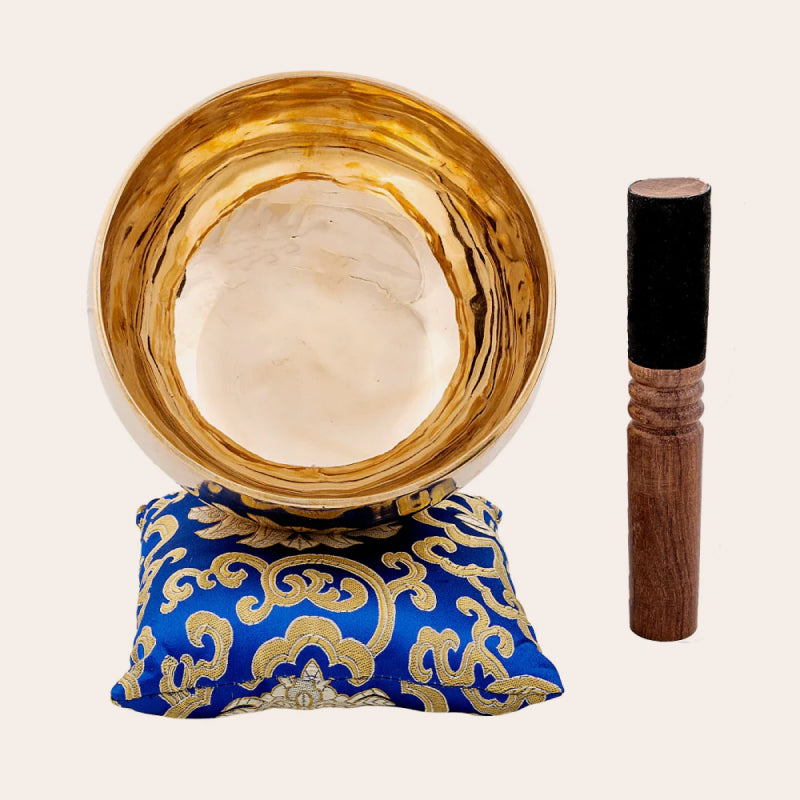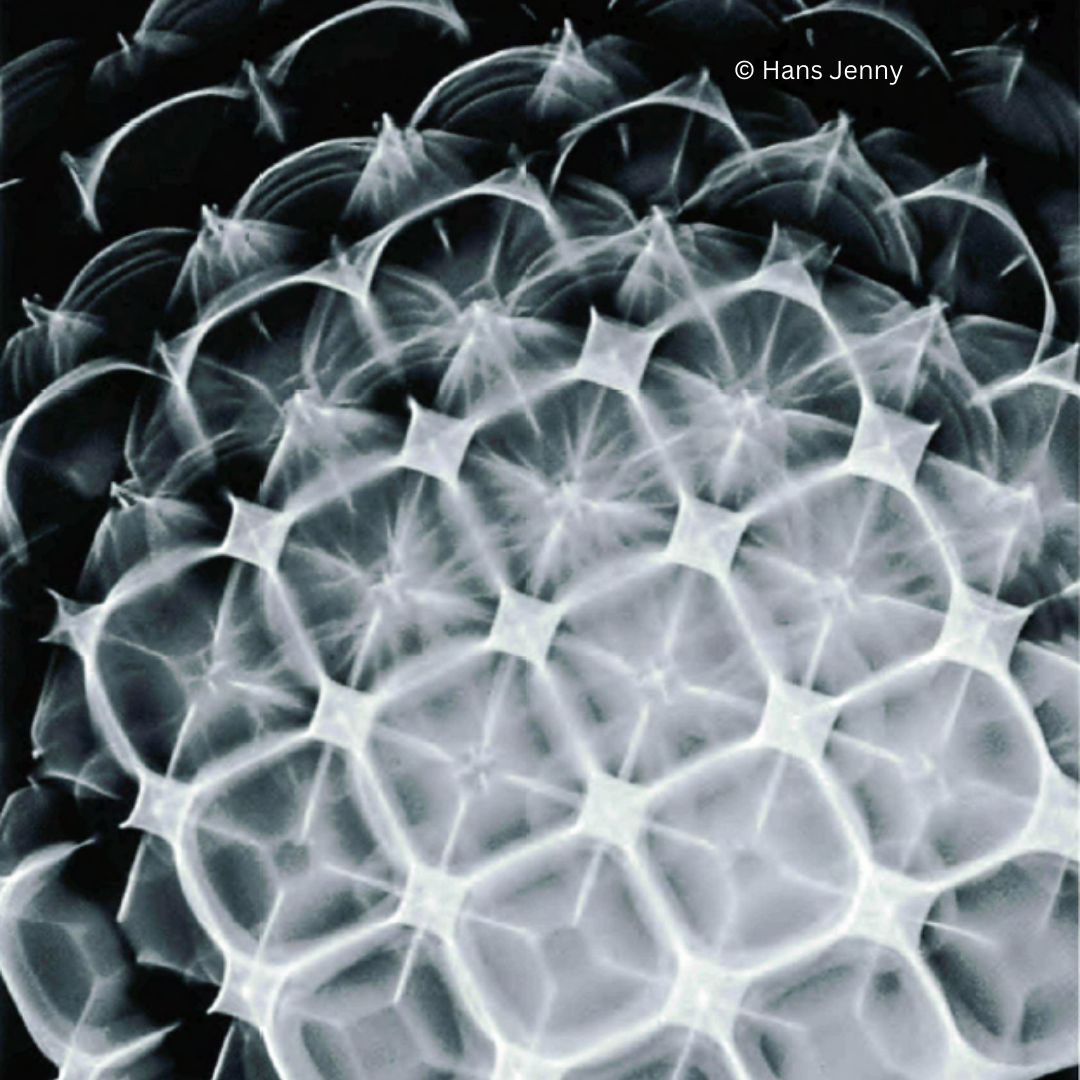Cymatics is the study of visible sound and vibration patterns -- you can "see" sound.
It explores how propagating sound waves through a medium such as air, water, or solids, interact with that medium to produce distinct geometric shapes and patterns.
These patterns are known as cymatic figures or Chladni patterns (Chladni patterns are named after Ernst Chladni, an 18th-century physicist and musician who conducted pioneering experiments in the field of acoustics), manifest in response to the frequency, amplitude, and resonance of the sound waves, revealing the intricate relationship between sound and matter.
In simpler terms, cymatics is the visual representation of sound vibrations.
Through the experiments of Hans Jenny, he unveiled a hidden world where sound transforms into visible patterns, forever altering our perception of the relationship between sound, vibration, and form.
Pre-Cymatics: Antecedents in Sound Visualization
Before the discovery of cymatics, scholars speculated about the hidden forces governing the universe. Ancient cultures recognized the profound influence of sound on the physical world, attributing mystical properties to certain harmonies and musical scales.
Pythagoras, the famed Greek philosopher, believed in the "music of the spheres," positing that celestial bodies emitted harmonic frequencies that resonated with the cosmos.
In the 18th century, Ernst Chladni, a German physicist and musician, conducted groundbreaking experiments in acoustics that laid the foundation for modern cymatics. Using a violin bow to excite the surface of metal plates covered in fine sand, Chladni observed distinct patterns emerging in response to different frequencies. These patterns, known as Chladni figures, provided early insights into the relationship between sound waves and material surfaces.
The Emergence of Cymatics: Hans Jenny's Paradigm Shift
Building upon Chladni's work, Hans Jenny embarked on a quest to unravel the mysteries of sound and vibration, guided by an interdisciplinary approach that combined elements of physics, biology, and aesthetics. Jenny's experiments expanded the scope of inquiry, revealing how sound waves not only influenced the movement of particles but also gave rise to intricate geometric patterns.
Central to Jenny's methodology was the use of a resonator, usually a metal plate or membrane, coupled with a source of sound. By varying the frequency and intensity of the sound, he could induce distinct patterns in various mediums, including liquids, powders, and even living organisms. Through meticulous observation, Jenny cataloged a vast array of phenomena, ranging from simple harmonic oscillations to complex, self-organizing structures.
One of Jenny's most profound insights was the notion of "formative forces," underlying principles that govern the emergence of patterns in nature. He posited that these forces, activated by sound vibrations, shape the development of organic and inorganic matter alike, offering a glimpse into the inherent orderliness of the cosmos.
Applications of Cymatics: From Science to Art and Beyond
The impact of Jenny's discoveries spans several fields, from science and medicine to music and visual arts. In acoustics and engineering, cymatics provides valuable insights into the behavior of materials under different vibrational conditions, informing the design of structures and devices with enhanced performance and durability.
In medicine, researchers explore the therapeutic potential of sound vibrations for treating various ailments, ranging from chronic pain to neurological disorders.
Techniques such as sonoporation leverage the mechanical effects of sound waves to enhance drug delivery and tissue regeneration, offering promising avenues for medical intervention.
In music and performance art, cymatics serves as a source of inspiration for composers, choreographers, and visual artists seeking to transcend conventional boundaries. Musicians experiment with sound visualization techniques to create immersive audiovisual experiences, blurring the line between auditory and visual expression.
Beyond its scientific and artistic applications, cymatics holds profound implications for our understanding of consciousness and the nature of reality. Proponents of holistic healing modalities incorporate sound therapy into their practices, harnessing the vibrational properties of sound to restore balance and harmony to the body, mind, and spirit.
Examples of Cymatics in Action
One striking example of cymatics in action is the phenomenon of acoustic levitation, where sound waves are used to suspend and manipulate small objects in mid-air. By precisely controlling the frequency and amplitude of the sound waves, researchers can defy gravity and levitate objects with remarkable precision, opening new possibilities for microgravity experiments and industrial processes.
Another fascinating application of cymatics is found in the field of fluid dynamics, where researchers study the behavior of liquids and gases under the influence of sound vibrations. Through techniques such as ultrasonic standing waves, scientists can manipulate the flow patterns of fluids, leading to advancements in areas such as fuel combustion, drug delivery, and environmental remediation.
In the realm of visual arts, cymatics inspires a myriad of creative expressions, from dynamic light shows to interactive installations that respond to sound in real-time. Artists harness the power of sound visualization to evoke emotions, provoke contemplation, and challenge perceptual boundaries, inviting viewers to embark on a multisensory journey of exploration and discovery.
Harnessing the Power of Sound
From the smallest particles to the grandest galaxies, the miracle of creation echoes through our reality, inviting us to listen with open hearts and curious minds.










